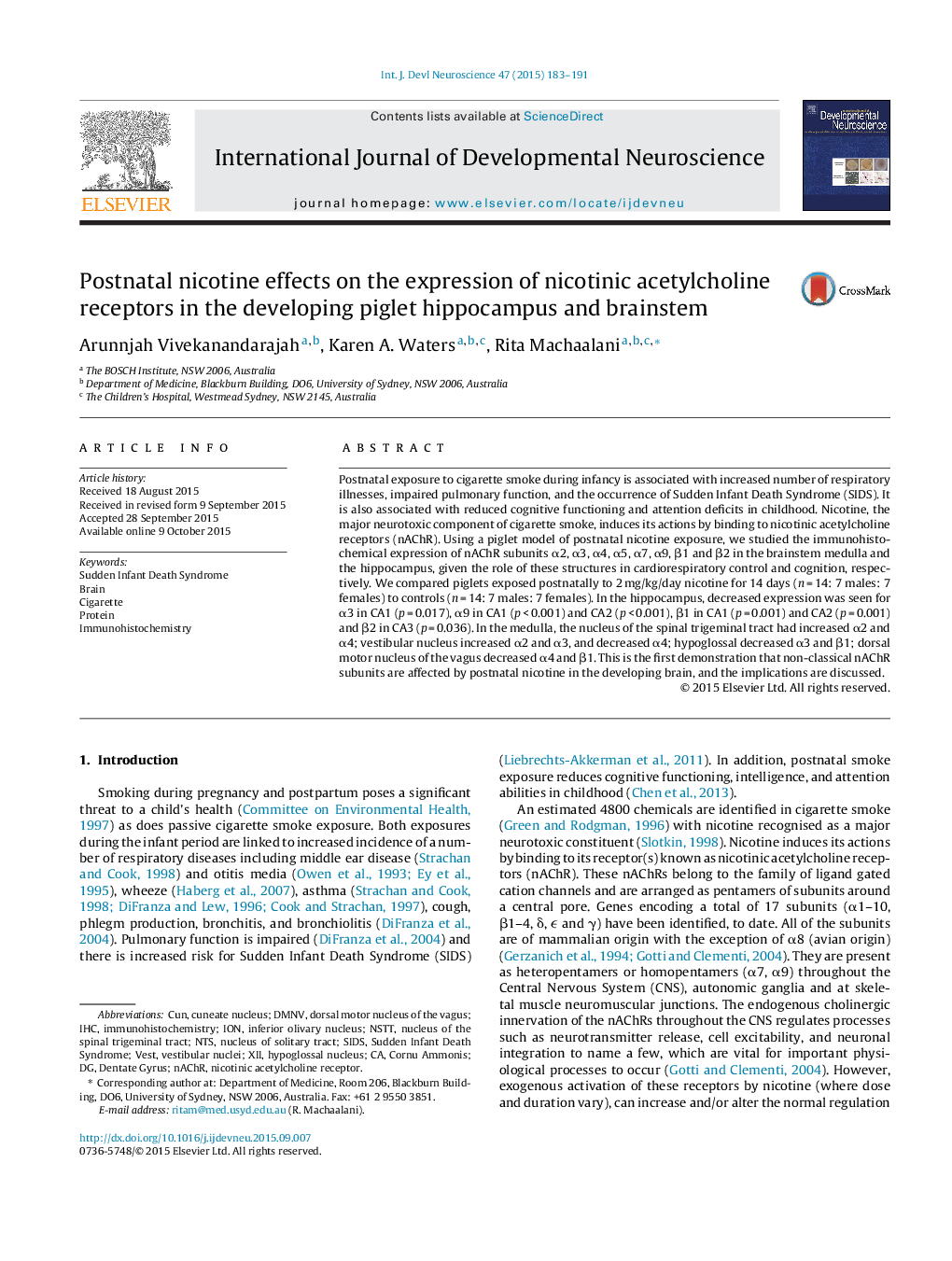| Article ID | Journal | Published Year | Pages | File Type |
|---|---|---|---|---|
| 2785648 | International Journal of Developmental Neuroscience | 2015 | 9 Pages |
•The α2, α3, α4, α5, α7, α9, β1 and β2 nAChR protein subunits are expressed in the piglet brain.•Postnatal nicotine exposure resulted in greatest change for α3 and β1 in more regions than any other subunits.•Regions predominantly affected include the DMNV, NTS and Vest nuclei of the brainstem medulla and CA1 and CA2 regions of the hippocampus.
Postnatal exposure to cigarette smoke during infancy is associated with increased number of respiratory illnesses, impaired pulmonary function, and the occurrence of Sudden Infant Death Syndrome (SIDS). It is also associated with reduced cognitive functioning and attention deficits in childhood. Nicotine, the major neurotoxic component of cigarette smoke, induces its actions by binding to nicotinic acetylcholine receptors (nAChR). Using a piglet model of postnatal nicotine exposure, we studied the immunohistochemical expression of nAChR subunits α2, α3, α4, α5, α7, α9, β1 and β2 in the brainstem medulla and the hippocampus, given the role of these structures in cardiorespiratory control and cognition, respectively. We compared piglets exposed postnatally to 2 mg/kg/day nicotine for 14 days (n = 14: 7 males: 7 females) to controls (n = 14: 7 males: 7 females). In the hippocampus, decreased expression was seen for α3 in CA1 (p = 0.017), α9 in CA1 (p < 0.001) and CA2 (p < 0.001), β1 in CA1 (p = 0.001) and CA2 (p = 0.001) and β2 in CA3 (p = 0.036). In the medulla, the nucleus of the spinal trigeminal tract had increased α2 and α4; vestibular nucleus increased α2 and α3, and decreased α4; hypoglossal decreased α3 and β1; dorsal motor nucleus of the vagus decreased α4 and β1. This is the first demonstration that non-classical nAChR subunits are affected by postnatal nicotine in the developing brain, and the implications are discussed.
